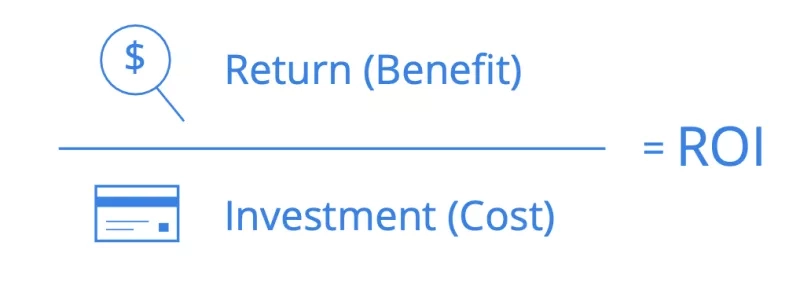Event success is a nuanced concept. While success relies heavily on attendance figures and financial outcomes, it also includes more abstract personal insights from attendees.
This guide will simplify the process of how to measure event success with a detailed roadmap for a thorough evaluation. We'll take you through the essential steps, starting with the basics and then delving into setting clear and precise goals and objectives, the nuanced analysis of critical event KPIs, and assessing post-event feedback.
Whether you're organizing a corporate conference, a community gathering, or a virtual summit, this guide will equip you with the tools and insights necessary to fully evaluate the success of your events.
Understanding Event Success Fundamentals
Before we get started, let’s go through some essential concepts.
What are the key metrics to consider when measuring event success?
The key performance indicators (KPIs) of event success are multifaceted. Attendance numbers and event revenue generation provide quantitative insights, while attendee satisfaction, engagement levels, and the achievement of predefined goals contribute qualitative perspectives. We’ll describe these event KPIs in more detail and explore how the integration of both quantitative and qualitative metrics forms the basis of a comprehensive evaluation framework.
However, the metrics you focus on depend on the specifics of the event. For example, event marketing research has found that for in-person events,attendance is the most common metric used to measure success with 67% of respondents listing it at number one, while revenue generation is second at 56% followed by attendee engagement (54%) and brand awareness (51%). In contrast, 45% of virtual event marketers use attendance to measure success while only 14.8% use revenue to evaluate their success.
How often should I measure event success?
The frequency of your assessments depends on where you are in the event lifecycle. Real-time monitoring of key metrics, such as social media engagement and attendance, can offer immediate insights before and during the event and should be done frequently. This may be weekly when the event is further out but may increase to daily as the date gets closer. However, more in-depth evaluation, including post-event reporting and feedback integration, typically occurs once the event is over.
How can ROI be calculated for an event?
The basic formula for calculating the return on investment (ROI) is:
This event ROI calculation provides a clear numerical representation of the event's financial success and is a crucial metric for stakeholders.
Calculating the gains from the investment in an event involves assessing both tangible outcomes, such as revenue generated or leads acquired, as well as intangible benefits, such as brand visibility and enhanced stakeholder relationships. Costs are self-explanatory and encompass the entirety of event expenses, from planning to execution.
How can I encourage attendee feedback effectively?
Making the feedback process quick, simple, and accessible is key. Event survey questions should be concise, relevant, and strategically timed (i.e. close enough to the event that it is still fresh in attendees’ minds) to maximize response rates. And you may consider incentivizing participation with discounts on the next event or access to exclusives to further stimulate feedback collection. Leveraging multiple channels such as online survey software, email, mobile event apps, or social media can also broaden feedback participation.
Keep in mind that a rating scale works well for gathering standardized feedback and requires less effort from respondents which can help response rates. However, incorporating a few open-ended questions can encourage more detailed insights.
How do I communicate event success to stakeholders?
Effectively communicating event success to stakeholders requires a strategic approach. Begin with a concise executive summary, highlighting how key achievements and metrics aligned with the predefined goals of the event. Utilize visual aids such as graphs or infographics to present data in a digestible format. Supplement quantitative metrics with qualitative insights, including attendee testimonials and notable moments. It’s a good idea to tailor the communication to each stakeholder group, emphasizing aspects most relevant to their interests and objectives.
Now that we’ve laid the foundation, we’ll dive into the details of measuring event success.
Setting Clear Event Goals and Objectives for Measurable Success
Establishing well-defined targets will guide your planning process and provide benchmarks for measuring the success of your event.
Define Your Purpose
Before diving into specific goals, it's essential to articulate the purpose of your event. What do you hope to achieve? Whether it's raising awareness, generating revenue, fostering community engagement, or a combination of these, a clear understanding of your event's purpose will shape your goals.
Align with Stakeholder Expectations
Consult with key stakeholders, including sponsors, partners, and participants, to understand their expectations. Align your goals with their interests and ensure that everyone involved is on the same page regarding the event's purpose and desired outcomes.
Utilize SMART Goals
Use the SMART criteria—Specific, Measurable, Achievable, Relevant, and Time-bound—when crafting your goals and objectives. This framework ensures that your goals are well-defined and provide a solid foundation for evaluation.
Understand and Prioritize Your Goals
Consider different categories of goals based on your event's nature. Keep in mind, however, that not all goals carry equal weight. Prioritize them based on their significance to the overall success of the event to ensure that resources and efforts are directed toward the most critical objectives.
- Financial Goals: If your event involves fundraising, specify the amount you aim to raise and how these funds will be utilized.
- Attendance and Participation: Define the number of attendees or participants you expect. This could include both physical and virtual event attendance.
- Engagement and Interaction: For events focused on networking opportunities or community engagement, set goals related to attendee interaction, feedback, or collaboration.
In the subsequent sections of this article, we’ll discuss strategies for measuring and evaluating the success of your event based on these established objectives.
Assessing Quantitative and Qualitative Metrics of Event Success
Quantitative metrics provide a solid foundation for objectively evaluating the success of your event with numerical insights. Qualitative metrics, on the other hand, offer a deeper understanding of the human experience at your event. It's important to use a combination of these metrics to paint a comprehensive picture of your event's success and to inform strategic decisions for future events.
Quantitative Metrics
Quantitative metrics provide tangible, numerical data that can be analyzed objectively. These are your main event KPIs.
Attendance and Participation Rates
The total attendance, encompassing both in-person and virtual attendees, is a foundational metric. An in-depth demographic breakdown further refines this understanding, allowing organizers to analyze the composition of the audience. Tracking participation levels in specific sessions, workshops, or activities offers even more insights into the areas that resonated most with attendees, shaping future event planning strategies.
Revenue and Financial Metrics
Total revenue stands as a pivotal metric, capturing the overall financial performance derived from ticket sales, event sponsorships, merchandise, and other event revenue sources. The ROI also serves as a critical gauge for assessing the event's financial success. Complementing this, the cost per attendee metric helps organizers understand the average financial commitment associated with each participant, providing a comprehensive view of the event's economic viability.
Social Media Metrics
Social media engagement, including likes, shares, comments, and overall interaction, serve as indicators of the event's online impact before, during, and after its occurrence. Utilizing a unique hashtag and assessing its reach can also be instrumental in gauging the extent of online conversations surrounding the event and the overall visibility and resonance of the event's brand across social platforms.
Website and App Analytics
Tracking website traffic before, during, and after the event provides insights into user interest and engagement. For events with mobile event apps, monitoring app downloads and user interactions within the app unveils attendee engagement patterns, helping organizers optimize digital platforms for future events.
Post-Event Surveys and Feedback
Utilizing surveys with standardized rating scales enables organizers to gather quantitative data on attendee satisfaction, content relevance, and the overall event experience. The Net Promoter Score (NPS) quantifies the likelihood of attendees recommending the event to others, offering a metric rooted in participant sentiments and advocacy.
Networking Opportunities and Interaction Metrics
For events with a networking focus, assessing business leads generated and connections made is paramount. Tracking the number of leads generated through networking opportunities provides insight into the event's impact on professional connections.
Qualitative Metrics for Event Success
Qualitative metrics provide a nuanced understanding of the human aspects of event success, going beyond numbers to capture the sentiments and perceptions of attendees.
Attendee Satisfaction Surveys
Gathering insights directly from attendees is paramount in understanding their satisfaction. In addition to standardized rating scales, use open-ended questions to encourage participants to articulate their experience in detail and highlight memorable moments, specific aspects that left a lasting impression, or meaningful relationships that were fostered. Attendee surveys should also ask attendees to rate speakers and presenters to gauge how well the material aligns with audience expectations and needs.
Testimonials and Success Stories
Collecting firsthand expressions of thoughts and experiences, whether in written or video form, adds a personal touch to the evaluation process. Having real-world examples of individuals who benefited meaningfully from the event highlights the tangible impact of the event and contributes to building a positive narrative around the event's outcomes.
Cultural and Inclusivity Metrics
Ensuring events are representative and inclusive is vital. Metrics related to diversity and inclusion evaluate how well the event catered to and represented diverse demographics and fostered inclusivity.
Post-Event Interviews
Conducting one-on-one interviews with select participants provides an opportunity to gain in-depth insights into their overall event experience and offers a qualitative depth that goes beyond basic survey responses. Seeking feedback from event partners, vendors, and sponsors on their experience and the value derived also adds a valuable perspective to the post-event evaluation.
Community Impact
Metrics related to community engagement measure the event's influence on the local community, whether through donations, volunteer efforts, or other contributions. Assessing long-term effects means looking into any lasting positive impacts the event has had on the community or industry it serves, providing insights into the event's broader societal significance.
By combining qualitative data with quantitative metrics, you create a comprehensive evaluation framework that guides future event planning and refinement.
Gauging Social Media Engagement
Evaluating social media performance and online engagement provides valuable insights into the impact and resonance of your event within the broader online community.
Pre-Event Buzz
Tracking social media mentions across various platforms and monitoring the volume of discussions related to your event provides valuable insights into the online buzz it generates. Additionally, keeping a close eye on the adoption and usage of your event's official hashtag allows you to gauge its visibility and popularity, serving as a barometer for pre-event engagement and interest.
Audience Reach and Impressions
Measuring reach involves determining the total number of unique users who saw content related to your event, providing a quantitative indicator of audience penetration. Simultaneously, tracking impressions, or the total number of times content related to your event was displayed on users' screens, offers a comprehensive view of the event's online visibility and potential impact.
Event Engagement Metrics
Analyzing the number of likes, shares, and comments on your posts provides a qualitative understanding of audience interaction. Complementing this, the click-through rate (CTR) measures the percentage of users who clicked on links or calls-to-action in your social media posts, offering insights into the effectiveness of your content in driving further engagement.
Platform Analytics
Each social media platform offers a unique set of metrics, and tailoring your analysis to these specifics enhances your understanding of audience behavior and social media engagement. For instance, on Instagram, tracking story views and interactions provides nuanced insights, while on Twitter, focusing on metrics like retweets and replies offers a platform-specific perspective.
Live-Tweeting and Real-Time Updates
Monitoring the frequency and engagement of live tweeting and live updates during sessions or key moments offers insights into real-time audience interaction. This provides a dynamic understanding of how your event unfolds in the online sphere.
Post-Event Engagement
The lifecycle of your event extends beyond its conclusion, and monitoring post-event discussions is pivotal for assessing its lasting impact. Ongoing conversations and reflections related to your event offer insights into audience sentiments and perceptions post-experience as well as sustained engagement.
Influencer Engagement
Monitoring influencer mentions and interactions associated with your event offers insights into their level of involvement and the potential impact on your audience. Simultaneously, measuring the potential reach of influencers who engaged with your event quantifies the extended audience exposure achieved through influencer partnerships.
Social Media Listening and Sentiment Analysis Tools
Employ comprehensive social media listening tools that allow you to monitor and analyze conversations surrounding your event, providing valuable insights into audience opinions, trends, and emerging topics. Adding sentiment analysis tools can provide even deeper, more qualitative insights by helping gauge perceptions of your event.
Event Conversion Rates
Utilizing tracking tools enables the direct measurement of conversions attributed to your social media efforts. This allows organizers to assess the tangible impact of their social media strategy on achieving event objectives.
By actively monitoring and analyzing these metrics, you can not only measure the success of your event but also identify opportunities for improvement and engagement strategies for future events.
Evaluating Collaborative Success
Assessing the effectiveness of event sponsorships and partnerships goes beyond financial metrics, encompassing brand visibility, alignment with organizational values, and the fulfillment of mutually agreed-upon objectives.
Attendee Engagement Activity
If sponsors have booths or exhibition spaces, measure foot traffic and attendee engagement to gauge the impact of these physical interactions. Evaluate the effectiveness of exclusive opportunities provided to sponsors, such as speaking slots, workshops, or networking events, ensuring sponsors derive meaningful engagement from their involvement.
Lead Generation and Business Opportunities
Track the number and quality of leads generated during and after the event, which provides a tangible metric of success. You should also assess how well the event facilitated meaningful connections and valuable business relationships between sponsors, partners, and attendees.
Post-Event Surveys and Feedback
Gathering feedback from sponsors and partners through post-event surveys is integral to understanding their satisfaction and areas for improvement, shaping future collaborative strategies. You can assess sponsor satisfaction by gathering insights into their overall event experience and evaluating how successfully sponsors and partners achieved their predefined objectives.
Media Coverage and Publicity
Measure the extent of sponsor- and partner-related media mentions garnered during and after the event, gauging the impact of sponsor and partner visibility in external channels. Assess the success of press releases or interviews featuring sponsors, quantifying their contribution to overall visibility and brand recognition.
Social Media Engagement Metrics
The digital landscape plays a crucial role in sponsor visibility. Monitor the engagement levels of sponsor-related content on social media platforms and evaluate the impact of event-related hashtags on sponsors' online visibility and engagement. This provides insights into sponsors' integration into the online event narrative.
By actively assessing these aspects, event organizers can not only measure the success of current collaborations but also strengthen future partnerships.
Navigating the Nuances of Event Success
Understanding every measure of success for your event is imperative to enhancing your strengths and identifying areas for improvement. This guide will get you started as you navigate the nuanced dimensions of success in event management, and you can establish an even sturdier foundation for success by leveraging comprehensive event management software to help you define event goals, develop and execute strategic event plans, and conduct crucial post-event analysis.
By focusing on these factors, you can not only conduct a thorough assessment of event success but also lay the groundwork for improving strategies for upcoming ventures.















